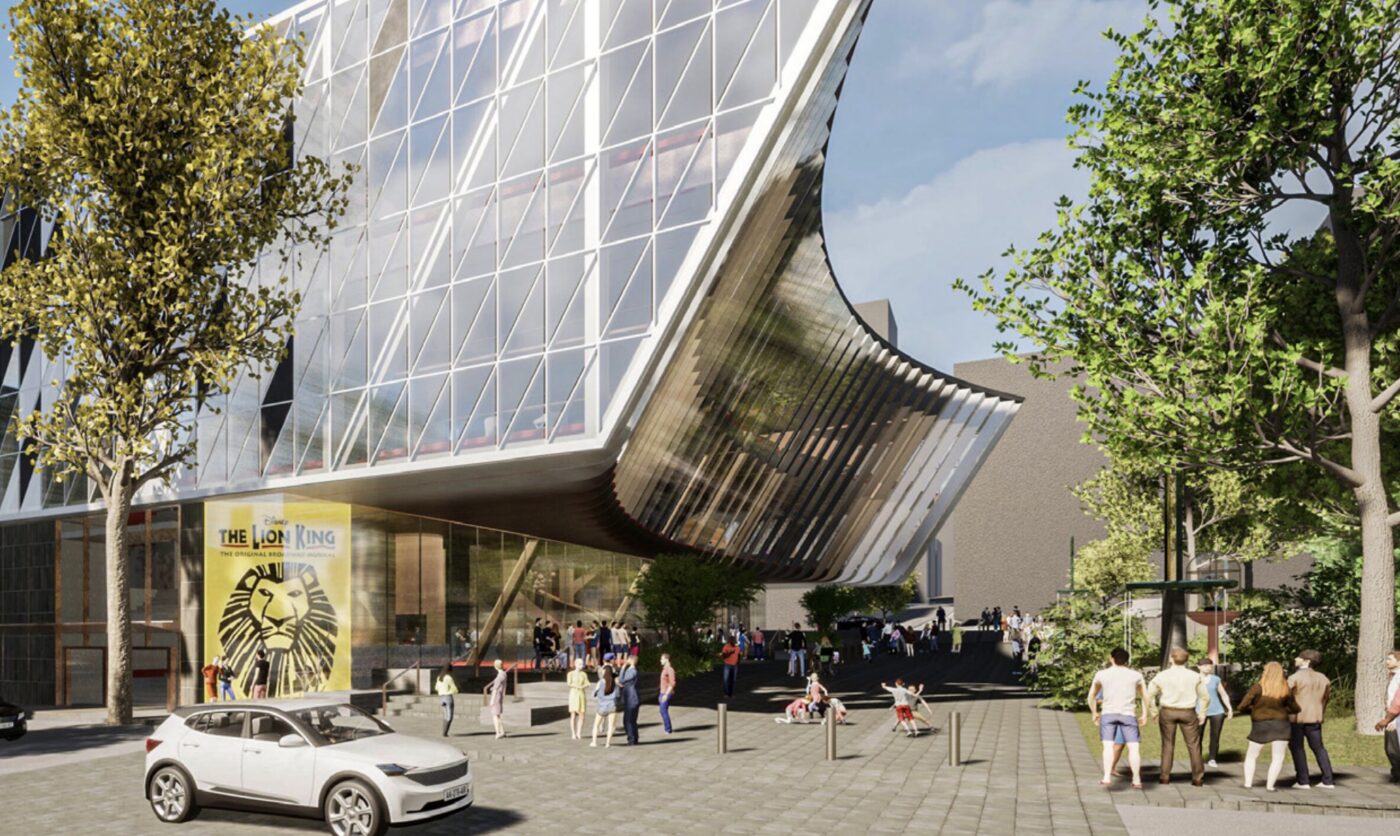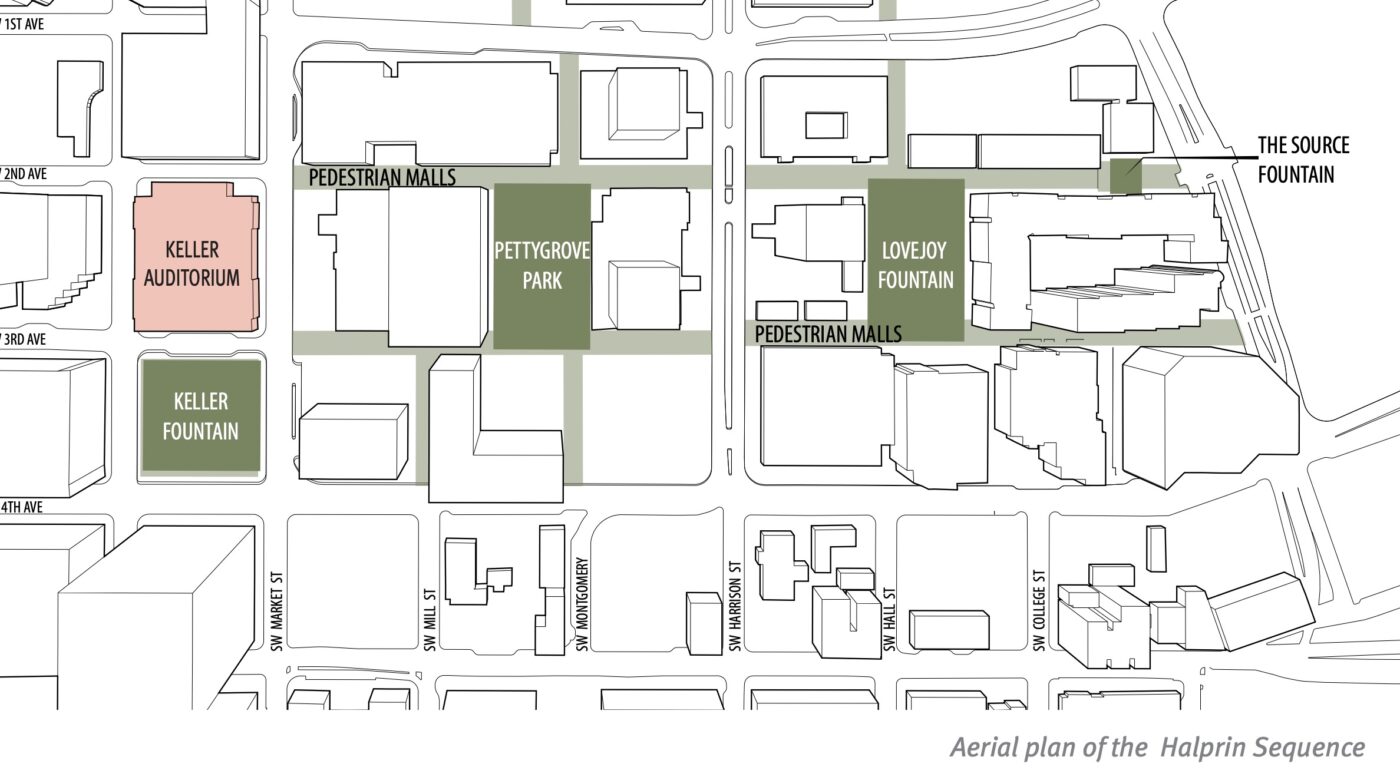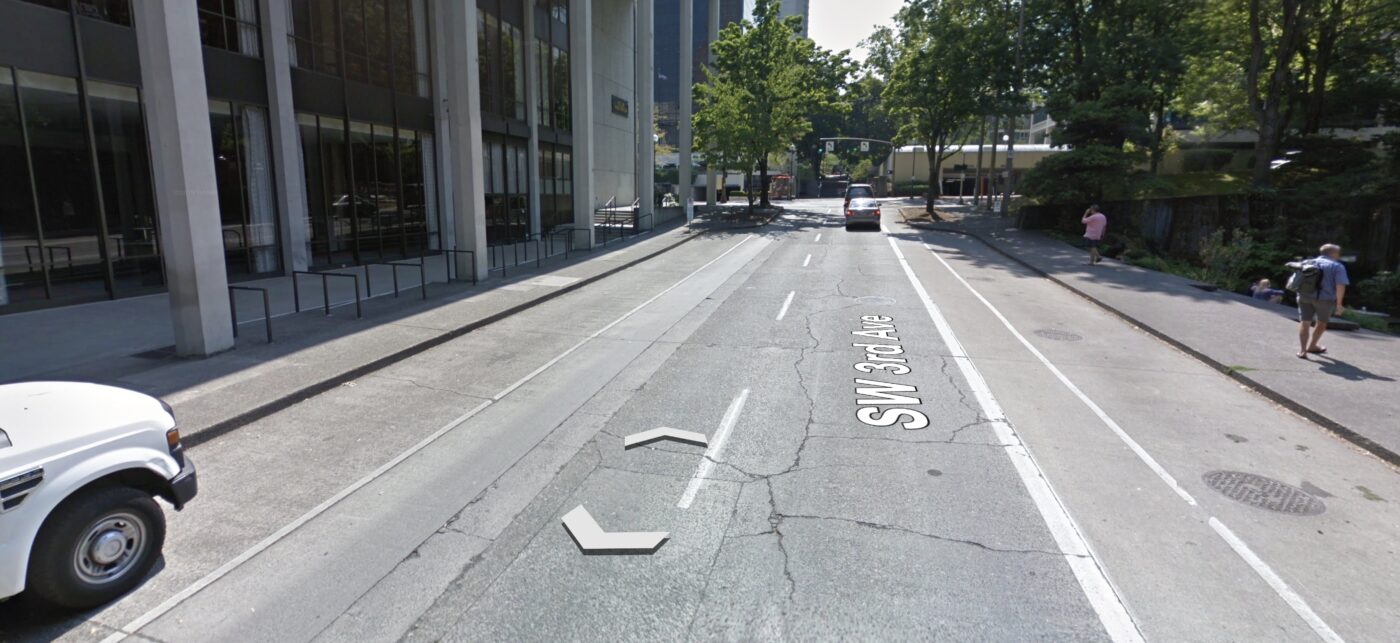
There’s a lot of talk right now about how to revitalize downtown Portland. One of the best tools we have to meet this challenge is our public right-of-way. Specifically, we need to use more space for community and less space for cars.
A new feasibility report for a major renovation of the Keller Auditorium passed unanimously by City Council this week, would take an exciting step toward that goal.
The 106-year old auditorium is poised for a major rehab, and the folks behind it see a new pedestrian plaza on SW 3rd Avenue as a major part of the upgrade. Currently, space for cars cleaves the Keller Auditorium off from the iconic Keller Fountain. The two-lane road and two lanes of on-street parking are guilty of, “disconnecting the two urban places,” states, A Keller Renaissance: Final Report, the 63-page feasibility study passed by Council Wednesday.
“There is an opportunity for the fountain plaza and auditorium to blend together by remaking Third Avenue as a pedestrian-first plaza. This approach would improve the sense of place for both landmarks while increasing pedestrian safety,” the report reads.





The 3,000 seat Keller Auditorium, which owned by the City of Portland and operated by Metro, is one of Portland’s most important cultural sites. It’s home to the Portland Opera, Oregon Ballet Theater, and is the only place in town that regularly hosts major Broadway productions. Bakers of the new report want City Council to green light an estimated $200 million renovation project that will bring it up to modern theater standards.
Tim Eddy, president of Hennebery Eddy Architects, the firm that developed the report, said in council testimony that the plan, “Has potential to energize the neighborhood and take better advantage of its physical relationship to the world-renown Keller Fountain,” and, “create public lobby space and a programmable urban plaza connecting the auditorium and fountain so they can perform as one.”
While the vision presented in the report shows a cross-section with 14-feet of “potential vehicle access” on 3rd Ave., the tone in the text and at council was that it wouldn’t take much more than a nudge to make it completely carfree. And there’s already been some planning momentum for the concept, thanks to Portland State University students.
The new plaza would not only help activate this part of downtown, it would bolster the existing Halprin Sequence, a series of open spaces listed on the National Historic Register of Historic Places that links the Keller to the Lovejoy Fountain and Pettygrove Park. With its proximity to Portland State University, major hotels, other cultural venues, and public transit, a carfree plaza at this location should be a no-brainer.
Here’s how the report describes the potential of the plaza:
“The new glass façade carries the revitalized spaces within, extends beyond the existing concrete colonnade, cantilevers over the new pedestrianized plaza of SW Third Avenue, and engages with the park. This gently curving façade displays the performative wonders from inside the auditorium stage, connecting the spaces to the outside and infusing the fountain and the surrounding spaces with new energy.
Together, this space will not only be the prologue and epilogue to every performance at the Keller, it will be a standalone attraction — a strong piece of public art on its own that becomes a true destination in combination with a revitalized plaza and auditorium.”
Everyone on council loved the report (granted, they were not being asked to make any binding decisions, just to accept the report into the record). Commissioner Rene Gonzalez said (in written remarks) that the vision is, “exciting because it speaks to activating space in a new and exciting way,” and that, “in particular, turning a section of 3rd Avenue into a pedestrian thoroughfare.” Mayor Ted Wheeler called the report, “So uplifting, so visionary, and so compelling in terms of what our community can be.”
Stay tuned for public engagement around this vision and a decision point back at City Council in spring 2024. If all goes according to plan, construction could start in 2027.



